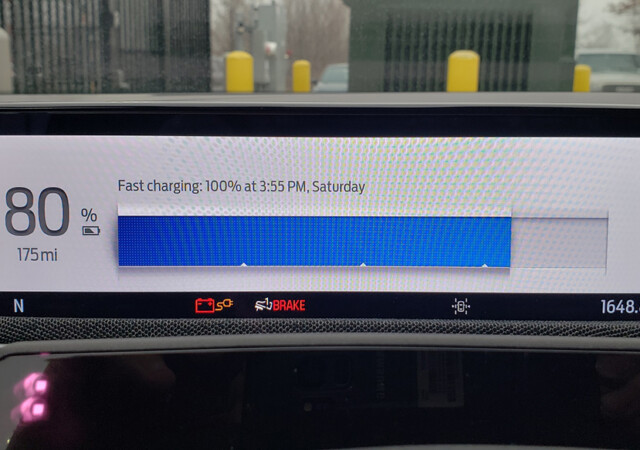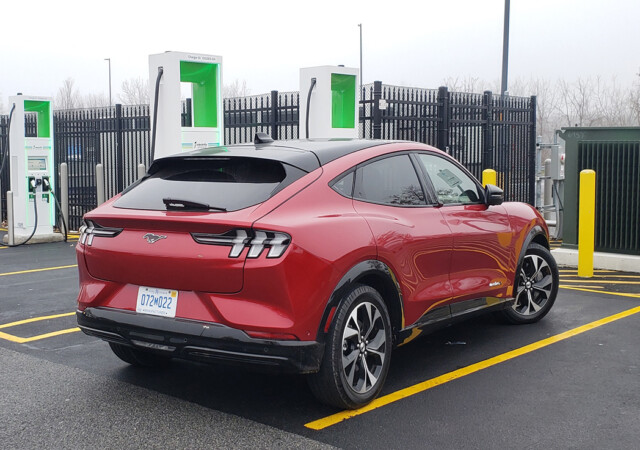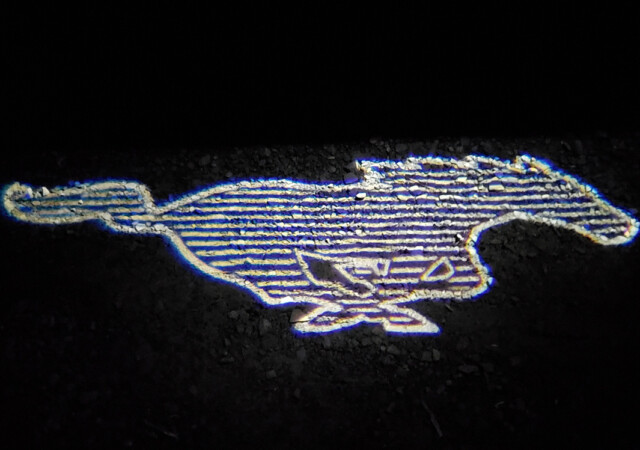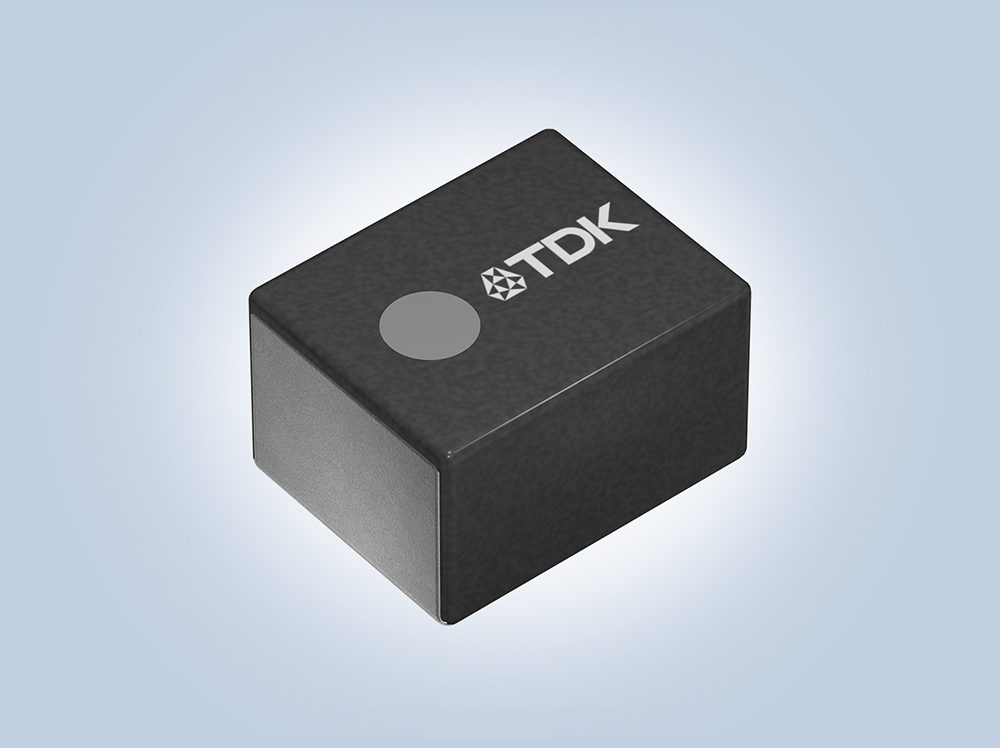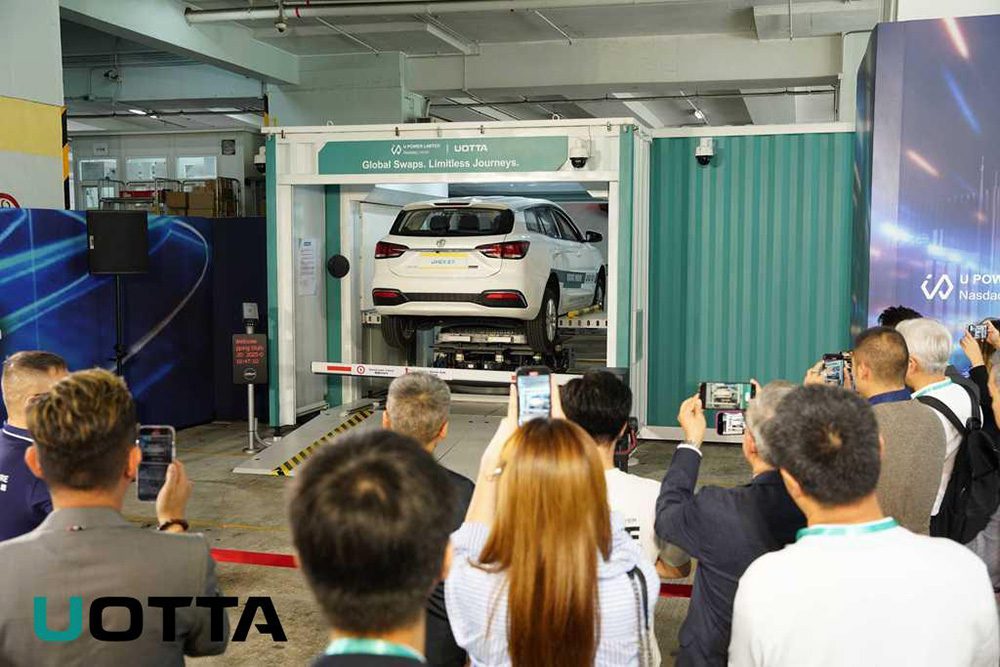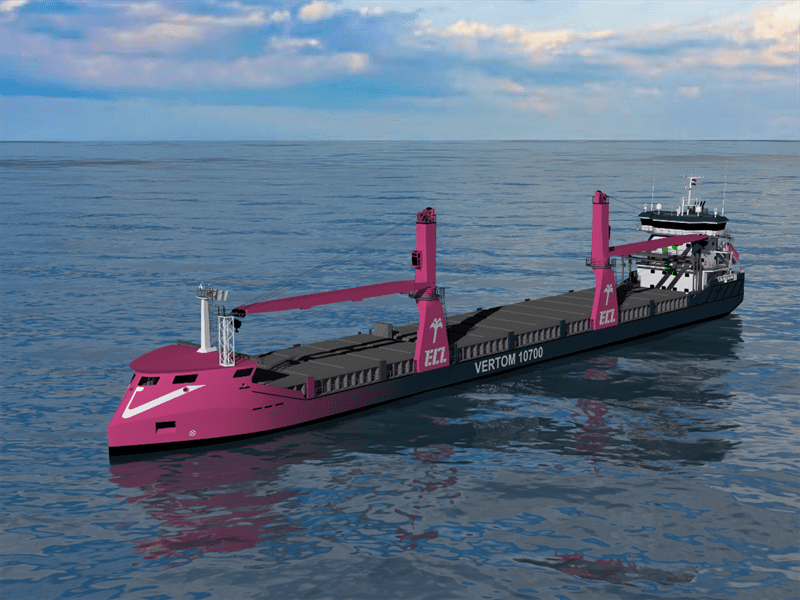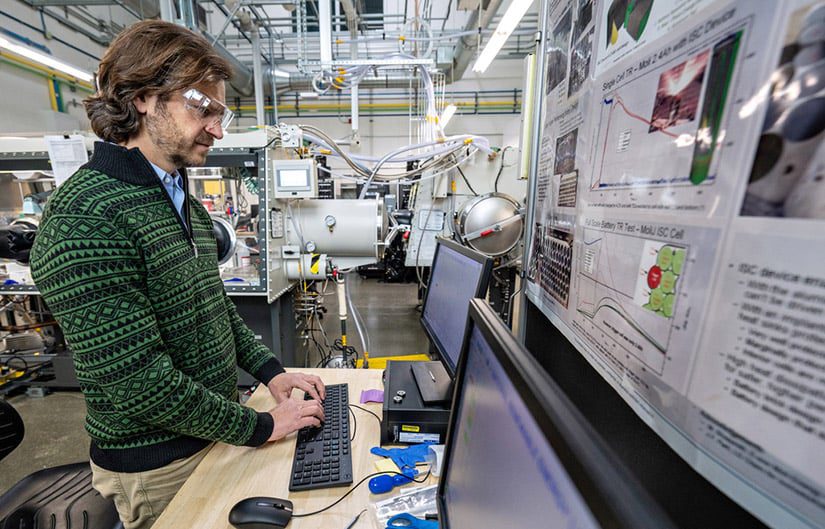Ford’s first real EV turns out to be a serious contender from Day One, due to striking looks and universal name recognition.
Sitting in the 2021 Ford Mustang Mach-E as it fast-charged in a Walmart parking lot, a grinning middle-aged man approached. The Mach-E attracts attention—thumbs-up in traffic, stares on the highway—so we figured he wanted to know more.
Through the open window, he asked, “That’s a cool Tesla, man! But why is there a horse on it?”
That was our first reminder how little the public knows about electric cars, even ones that grab their attention. Of the dozen people who asked about the car, one third had no idea what it was, even though they knew it looked cool. Another third knew exactly what it was: “Hey! Is that really the Mach-E? WOW!” And the final third … really did think it was a Tesla. Oh, and one friend saw the photo and briefly thought it was a Ferrari.
Serious contender
That level of attention will serve Ford well. The new Mach-E is a serious entry into the burgeoning ranks of battery-electric crossover utilities. It looks stunning, performs well, holds four people comfortably, and charges fast (at the right charging stations).
In fact, it’s arguably the first EV desired by the public for the way it looks as a car, regardless of the electric part, since the BMW i8.
Moreover—a news flash here—the Mach-E has the Plug And Charge feature enabled from launch, meaning that at properly equipped charging stations, you just plug in. No network membership or phone app or RFID fob or credit card is required: The car identifies itself to the charging station, which handles all the billing with the FordPass system on the back end.
That’s the closest other makers have come to the Tesla experience of plugging in and walking away. And it will make acclimatization to DC fast charging on road trips dramatically easier for the broader market of EV buyers who aren’t enthusiasts or advocates.
Ford says Mach-E deliveries to retail customers are “imminent,” meaning the first ones will be in driveways before the year ends. It will compete with the Tesla Model Y, Volkswagen ID.4 and Nissan Ariya, and Audi Q4 e-tron, along with compact crossovers to be launched by Hyundai and Kia and the Chevrolet compact crossover EV teased last month by GM execs during a panel discussion.
Dramatic looks, comfortable interior
Ford has hit a home run with the looks of the Mach-E to our eyes. It may or may not be a “real” Mustang—more on that further down—but it’s a sleek and striking crossover-coupe-utility vehicle. It won’t give you the boxy cargo capacity of the new Ford Bronco Sport compact crossover, but it will comfortably hold four adult-sized people plus a minimal 30 cubic feet of luggage (or 60 cubic feet for two people, with the rear seat folded down).
The designers moved the front wheels forward from the base of the windshield to signal the car’s rear-wheel drive, and added traditional Mustang swelling fenders over all four wheels. It’s a more powerful look than EVs whose main drive wheels are in front, and even some that aren’t (Tesla Model Y and VW ID.4 for two).
The interior is minimalist, but not absurdly so. Our test car’s two-tone upholstery included a lovely tweed-like gray weave on the top of the dash. We were so taken by it we found ourselves regularly rubbing fingers across it. The Mach-E has a host of such unusual design touches, from interior door handles that pull straight back to the knurled rotary knob set directly into the bottom of the center touchscreen for things like audio volume control.
Unlike the Model Y, Ford has included a shallow but wide 10.2-inch “instrument” screen behind the steering wheel as well as the portrait-format 15.5-inch touchscreen that sits proud of the dash center. It’s a more “normal” look than the Model 3, and the graphics on both are clear, crisp, and quick to respond.
Front and rear headroom is helped by the full panoramic glass roof, another trick made popular by That Well-Known EV Maker. We found the Ford’s front seats less bolstered than those of a Tesla, however. Unless we’ve gained more Covid weight than we knew, an inch more width and lower-cushion length would have helped. They weren’t uncomfortable, though; no aches or pains appeared after a few hours behind the wheel. We should add the Mach-E has the single fastest and hottest seat heaters we’ve found on any test car in the last few years. Wow!
Performance
Ford says it has gone to great lengths to make the Mach-E a real Mustang in its driving feel. It’s been several years since we’ve been behind the wheel of any other ‘Stang, so we can’t compare directly. But the stiff structure and long wheelbase for its length give it a good ride, while the low weight of a 98-kilowatt-hour battery pack (88 kWh usable) keep it stuck to the road.
Behind the wheel, even in Whisper mode, the electric steering feels heavy against that of EVs from Asian makers. And while the targeted acceleration of 5.5 seconds from 0 to 60 mph is swift, it’s far from explosive as a Tesla Performance model is. For that, we have to wait for the upcoming Mach-E GT versions, now scheduled to hit the market at the end of next summer, with promised 0-to-60-mph acceleration times of less than 4 seconds.
The one-pedal driving, right down to a full stop, is easy to learn and predictable. We detected a very slight lag after lifting off the accelerator before it kicked in. A Tesla has slightly faster on/off, which allows more precise modulation. That said, it didn’t interfere with our enjoyment and the blending of regenerative and friction braking was absolutely seamless.
Faster, simpler fast charging
Tesla has a huge advantage in its Supercharging network, one that has yet to be equaled by any other maker that must make a motley collection of multiple charging networks, locations, and DC fast-charging speeds comprehensible and seamless to EV drivers. While Ford’s not there yet, the Mach-E and its Plug And Charge capability is a giant step toward that end.
Ford is either the first or second maker to deliver working Plug And Charge in production vehicles. Deliveries of 2021 Porsche Taycans are starting, so it’s unclear which make will have the first retail customer use Plug And Charge in the real world. Many other makers plan to integrate it as soon as they can.
We fast-charged our Mach-E four times: once on a Greenlots charging station that didn’t include Plug And Charge and was limited to 50 kW, and three times on newly-updated Electrify America 150-kW stations. (EA has had to replace hundreds of charging stations in the Northeast following sustained reliability problems, but we were lucky enough to hit new stations in all three cities.)
Two of the three EA sessions worked seamlessly. Like all Mach-Es, our car came with an allowance of 250 kilowatt-hours a month. We simply drove up to the charging station, opened the charge port, plugged in the CCS connector, and walked away. The station connected to the car, then validated the payment method associated with our FordPass app. And charging started.
The third EA session was with a station so newly upgraded that the Plug and Charge software hadn’t yet been loaded. The friendly customer-service rep simply comped the charging session when she heard it was a Mach-E.
The Mach-E is set up to charge at 160 kW for the first 4 or 5 minutes, according to Ford EV global director Darren Palmer. Then it ramps down to about 110 kW and runs to 80 percent state of charge from there. We observed the 160-kW rate on one of our three charges, starting at 14% battery capacity. It took just 39 minutes to get from there to 80%, at which point the fast-charging rate slammed down to a grindingly slow 14 kW and we quit.
On the second EA charge, we saw a consistent 100 to 110 kW to the same point. The third wouldn’t get beyond 54 kW, and Ford is looking at its charge data to find out why (we’ll update the article if we get a definitive answer).
Many EV early adopters have asked about the Mach-E’s charge curve, so if you want a TL/DR, it’s this: The Mach-E charges fast, and where Plug And Charge is enabled, drivers can literally plug it in and walk away.
That’s a big advance over the current state of the art. Well done, Ford.
About our test car
Our 2021 Ford Mustang Mach-E Premium AWD test car carried a base price of $49,700. The Long-Range battery option to get an EPA combined range rating of 270 miles added $5,000, and the Rapid Red paint cost $400 more. With a mandatory delivery fee of $1,100, the final sticker was $56,200. It remains eligible for the Federal income-tax credit of $7,500, and a host of state, local, and corporate incentives.
Driving range? Given our multiple fast charging and a broken Level 2 charging station at home, we’re hesitant to suggest numbers. We’d feel safe saying 230 miles in temperatures from 35 to 50 degrees F, but more conclusive data will have to wait for the next test.
We also tested a pre-production model that hadn’t yet been updated with final software. Moreover, the Mach-E version of the FordPass software app we used wasn’t final either. So we’ve omitted comments on issues encountered with both releases, which can be updated over the air.
A little history
The Mach-E was a surprise from the Dearborn maker, whose only previous electric passenger car was the underwhelming, compromised, and quickly outdated 2012-2018 Ford Focus Electric compliance car.
Fewer than 10,000 were sold from 2012 through 2018, and justifiably so. It remains the only car whose product managers spent as much time telling journalists why people wouldn’t want to buy it as they did promoting the actual benefits of an EV.
But that was then, and this is now.
As the story goes, in mid-2017, Ford’s then-new CEO Jim Hackett asked why the next EV compliance car couldn’t become a vehicle people might actually want to buy instead. The modified design was teased for two years as a “Mustang-like” EV before its actual addition to the Mustang line was announced late last year.
Cue shrieking, moaning, wailing, gnashing of teeth, and loud revving of V-8 engines by Mustang traditionalists.
But is it a Mustang?
Putting the horse on the hood was indeed a bold move by Ford. Whether the Mach-E is really a Mustang or not will probably remain the subject of endless bar debates well into the new decade.
Ford talks a lot about any Mustang’s performance feel, its road-hugging handling, and design that telegraphs those sporty qualities. The Mach-E, they say, is simply the same philosophy extended to a very different powertrain. Oh, and, yeah, it’s also a sort of SUV, not a two-door coupe or convertible.
We think it’s a smart move on Ford’s part, albeit one whose horizon spans a decade or more. The Mustang sells more than either the Dodge Challenger or the Chevrolet Camaro, but it’s part of a waning segment. The Challenger is now a decade old, and Chevy has already said it won’t create a new generation of the Camaro once the current one reaches the end of its life.
Ford sold 72,500 Mustangs in 2019, including sales to rental fleets. The total number of “pony cars” sold that year was 182,000—or 40 percent of the number of just Toyota RAV4s sold the same year. If Ford makes the reputed 50,000 Mach-Es in its first full year of production, that automatically boosts the model’s sales by a healthy margin.
Whlie the Mustang name has half a century of equity and recognition, it’s now the sole remaining passenger car Ford sells in the U.S. Many of the people who used to buy sporty two-door coupes are now buying sporty, tough Jeeps or performance SUVs. So adding an SUV to the Mustang range—it’s an addition, Ford frequently shouts, NOT a replacement!—gives the Mustang name a future direction.
Not to mention it gives a new electric car far better name recognition than even Tesla may have today.
Does it matter?
Is it a Mustang? Yes and no. But it doesn’t matter; it’s called the Mustang Mach-E, it has an instantly recognizable horse logo, and that gives it huge advantages right out of the gate.
A Mustang electric car could have been a travesty, on the order of the 1970s Pinto-based “Mustang II,” if it hadn’t been a good car. But it is—and that means that, unexpectedly, Ford is now a real contender in the electric-car stakes.










